The Great Battle of Kursk: Operation Kutuzov. Part of 2
The offensive of the troops of the Western Front, where the main blow was dealt by the 11th Guards Army of Baghramyan, initially developed successfully. Soviet troops quickly made a breach in the German defense, they introduced mobile units (tank enclosures). But in the future, excessive caution slowed the offensive, and the Soviet command was late with the introduction of the main striking force, the 4th Panzer Army, into the breakthrough. As a result, the German command was able to tighten up reserves, tank and motorized divisions from dismantled strike groups that participated in Operation Citadel, to create a new defensive line. In addition, German distinguished aviation, which created many problems for the advancing Soviet troops. The Western Front was unable to achieve decisive success — encircling the enemy’s Bolkhov grouping, breaking through to Khotynets, which led to the interception of the Orel – Kursk railway. But in general, the situation was in favor of the Soviet troops, so the German command on July 26, 1943 decided in principle to withdraw troops to the Hagen line, leaving Bolkhov and Orel.
11 July 1943, the 11-I Guards Army under the command of Ivan Bagramyan began reconnaissance. Enhanced reconnaissance battalions went on the offensive after the 10-minute artillery raid. The actions of the battalions were supported by artillery. As a result of a fierce battle that lasted all day, army scouts in a number of places made their way through the barrier line and occupied the first trench line, which turned out to be a false front edge with little strength. Then the battalions approached the second trench line, where the main enemy forces were located. Actions reconnaissance allowed to identify the German firing points, to establish the location of its front edge. The Soviet command was able to clarify the data for artillery preparation and air strikes.
On the morning of July 12, at 5:10, the Soviet command undertook aviation-artillery preparation. Artillery preparation and airstrikes were inflicted on the real line of defense of the enemy. The German defensive system was severely destroyed. As a result, the 11th Guards Army could advance in the first half of the day without encountering any serious resistance from the German troops. The attack began at 6.05, and already at 7.00 the front line of the German defense was broken. In addition, the German command at the beginning of the Soviet attack somewhat underestimated the danger of an attack by the 11th Guards Army, and the activity of the 6th Air fleet in this direction was minimal. In the afternoon, the Germans somewhat recovered from a powerful blow and began to provide fierce resistance.
In order not to give the enemy a final come to his senses and stay on the rear line, Bagramyan suggested introducing the 5 tank corps under the command of Mikhail Sakhno into the breakthrough. The hull was well-equipped, it consisted of 179 tanks. In 17.00, the 5 tank corps was introduced into the breakthrough, and he launched an offensive southward. To 20.00, Sakhno corps units reached the outskirts of Ulyanov and Rechitsa. The corps command did not take risks and attack at night without reconnaissance of the German defense system. They decided to go on the offensive in the morning, along with the infantry. In general, the first day of the attack was successful - units of the 11 Guards Army at the front in 14 km advanced deep into the enemy defenses on 10-12 km. In addition, in the second echelon of the 11 of the Guards Army, the 1 tank corps under the command of Vasily Butkov was preparing for an offensive. It was a fresh connection that did not participate in the battles since the spring of 1943. It consisted of 170 tanks and 21 SAU.
The 1 tank corps reached its initial positions at night and early in the morning of July 13 launched an attack. But his movement stopped the anti-tank ditch near the village of Staritsa. Go around it from the flanks prevented ravines. Sappers under enemy fire were able to break through the corridor only in the evening. In fact, the corps stood for a whole day, losing the 23 of the tank that had been burned down and destroyed. The 5 tank corps acted more successfully. Infantry with the support of tanks launched an attack. In the village of Ulyanovo, the advancing Soviet troops with false attacks drew off the entire German garrison to the western outskirts, which allowed without serious resistance to break into the village from the side of Staritsa. An important stronghold of the enemy was captured. With the capture of Ulyanov and Staritsa, the Soviet troops opened the way to the south and southeast.
After the capture of Ulyanovo in 14.30, Sakhno's corps went on the offensive. The 5 Corps advanced the second half of the day almost without encountering resistance from the enemy forces. According to the testimony of prisoners, the units of the German 211 and 293 infantry divisions defending in this direction were virtually destroyed, and the 5 tank division suffered heavy losses and was withdrawn to the rear. The defense of the Wehrmacht for the two days of fighting was broken through at the front of 23 km and to a depth of 25 km.
The 70 Tank Brigade advanced almost 30 km and crossed the Vyteben River and, on the shoulders of the enemy, broke into the village of Yagodnoe. However, the command of the army again showed caution. It was considered that it was dangerous to leave one brigade in Yagodny, apart from the main forces. The 70 Brigade from Yagodny was taken back. This led to the fact that the Germans occupied Yagodnaya, and the line on the Vyteben River. Excessive caution led to two days of heavy fighting.
After two days of offensive, Bagramyan’s army broke through all three lines of defense of the enemy. The German command finally realized the gravity of the situation in this area. Kluge ordered the Model to take command of the 2 Tank Army, while retaining the post of commander of the 9 Army. As a result, the Model led the defense throughout the Oryol ledge. The 11 and 18 tank divisions were urgently deployed to the 20 th breakthrough area of the Guards Army. Prior to their approach, the task of deterring the advancing Soviet troops was assigned to the 6 air fleet.
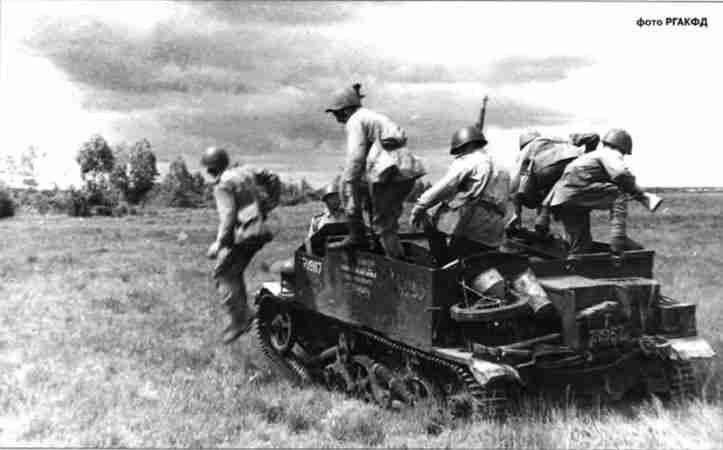
Soviet infantrymen master the English armored personnel carrier Universal. Orlovskoe napr, August 1943
8-th Guards Rifle Corps, with the support of tanks, broke through the German defense on the river Vytebet. German stronghold - Berry, was surrounded and taken by storm. The 1 and 5 tank corps resumed the offensive, but each was in its own direction. Butkov's 1 tank corps turned south, in the direction of Hotynets. Sakhno's 5 tank corps continued to move in a southeastern direction, to the rear of the German Bolkhov grouping. German aviation in this direction, in contrast to the line of attack of the 3 Army of Hunchback, at the first stage of the battle could not effectively influence the Soviet troops. The air raids on the tank corps were repelled by cover fighters and anti-aircraft artillery, and bombardment from high altitudes did not give positive results.
14 July 1943 of the year The headquarters allowed the Western Front to introduce another mobile unit into the breakthrough - the 25 tank corps under the command of Fyodor Anikushkin. Corps Anikushkina was in reserve the front. In the evening, the corps was alarmed and sent to the aid of the 1 tank corps, two corps were to capture Hotynets.
July 16 Luftwaffe launched a massive attack on parts of the 1-th tank corps. The change in the nature of the terrain contributed to the increase in the effectiveness of their raids - the forests were replaced by a low-forest plain, with gullies and ravines. In addition, the Soviet fighter aircraft received an order to patrol the area above Hotynets, where the Soviet tanks were supposed to arrive. The 1 Corps lost its fighter cover. This time, excessive command haste has led to a slowdown in the movement of the tank corps and an increase in losses. In addition, the Germans organized a series of counterattacks on the hull, starting with the help of tanks and motorized infantry to bypass the body of Butkov from the flanks. The 1 tank corps was forced to temporarily abandon the movement to Hotynets and retreat back into the woods.
“Forward to the Eagle!” Heavy 203-mm howitzer B-4 on the march.
In the evening of July 16 went on the offensive and the 25 tank corps (he moved to Khotynets in another direction). However, he was also stopped by air strikes and counterattacks of infantry and tanks. July 18 The 1 and 25 tank corps again attempted to go on the offensive, but their attacks repelled. On July 20, the body of Butkov was again subjected to a massive raid of German aviation and suffered heavy losses.
July 19 The 162 Tank Brigade, commanded by Colonel Ignatius Volynets from the 25 Tank Corps, slipped into the gap in the German defense and moved onto Hotynets. True, the Germans quickly discovered the breach and did not allow the rear units to pass behind the tanks. Thanks to the resourcefulness of the tankers, they were able to avoid the strike of German aircraft — after finding a large group of enemy aircraft, they launched three white missiles to signal their own. Several German fighters even covered Soviet tanks from the air for some time. 162-I brigade temporarily took Khotynets on the move and for three days, acting from ambushes, destroyed the enemy’s vehicles and columns. July 19-21 Volynets brigade fought without communication with their own, logistical support. When fuel and ammunition were running out, on the night of 22 July, brave tankers made their way to theirs in the same area where they had leaked to the German rear.
The German command with the help of reserves was able to stabilize the situation. Moreover, the army of Bagramyan, having gone deep into almost 80 km and having a front in 120 km, exhausted its forces, suffering heavy losses in people and technology. The offensive potency of the 11 Guards Army was almost exhausted. With great difficulty, only two rifle divisions moved to Khotynets with the support of tank divisions. Therefore, the Soviet command decided to throw into battle 4 th tank army under the command of Vasily Badanov. 20 July 4-I tank army was incorporated into the Western Front. It consisted of 11 and 30 tank corps, 6 Guards mechanized corps. The army consisted of 38,5 thousand people with 764 tanks and SPG. The 4 and 5 tank corps were also assigned to the 25 Army.
Considering the fact that the Germans had built in tight defenses on the tip of the advancing wedge of the 11 Guards Army, they decided that it was unwise to throw another mobile unit in this direction. It was decided to enter into battle 4-th tank army at the base of the wedge, where the German defense was not so strong and help the Bryansk front to take Bolkhov. Then Badanov’s army was to break through to the Orel-Bryansk railway in the Naryshkino area.
20-25 July, before the concentration of forces 4-th tank army, the Western Front took a pause and led the battles only tactical values. By this time, the German command had already carried out a regrouping of forces and transferred considerable forces to Bolkhov and Khotynets. The model almost completely dismantled the shock group of the 9 Army. Under Bolkhov, 9-i, 18-i and 20-i tank, 10-i and 25-i motorized divisions defended organizationally to 23-i army corps. And to Khotynets, the SS division “Great Germany” was redeployed from the South group of the Army Group South on the southern flank of the Kursk Bulge. As a result, by the beginning of the offensive of the 4 tank army, the Germans had built a dense anti-tank defense on the site of its offensive. The Soviet command was late in entering the 4 tank army into battle.
Naturally, this affected the offensive of the Badanov army in the most negative way. In the first echelon, there were 6-th Guards Mechanized Corps and 11-th tank corps, in the second - 30-th, 5-th and 25-th tank corps. On the edge of the first echelon were two tank and one mechanized brigade, which attacked the area in 9 km. July 26 army tried to launch an offensive, but the Germans repelled it. Brigades advancing first suffered great losses. Rapid breakthrough to the rear of the German troops did not work, which caused great disappointment in the Soviet command, given the mass of armored vehicles, which immediately entered into battle.
On the same day - July 26, the German command made a principled decision to withdraw troops to the so-called. line "Hagen" at the base of the Oryol arc. The departure was planned to be made in the period from July 31 to August 17, sequentially, from one intermediate defensive line to another line. This defensive line was named in honor of the mighty, wise warrior, the hero of the German heroic epic Song of the Nibelungs (also called the section of the German defensive line West Wall). In addition, the German language has the word der Hag, which means such things as "fence", "fence" or "fence." The term "Hagen line" appeared in the documents of the German headquarters in the year 1943. This milestone was created not in advance, but in haste. During the preparation of Operation Citadel, it was decided to create a defensive line west of Orel. Line "Hagen" was supposed to strengthen the defense in Orel direction. Based on her Wehrmacht, could lead a war of maneuver. However, by the time the operation "Citadel" was exhausted, and the troops of the Western and Bryansk fronts began the operation "Kutuzov", the line was not ready yet. She was not particularly cared for, since the active construction of fortifications on this line undermined confidence in the success of Operation Citadel. All attention and forces were riveted to Operation Citadel and the subsequent Soviet counteroffensive. Though numerous, but only wooden and earth fortifications were erected, the road junctions were well strengthened. Concrete structures at this turn did not have time to sharpen, although the plans were ambitious.
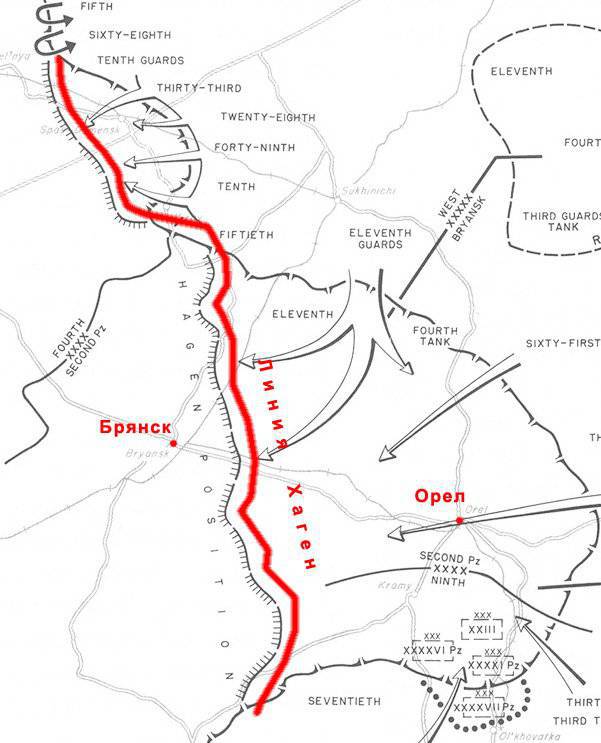
July 27 Badanova army again went on the attack. But the 4-I tank army again failed to penetrate the German defense. She only pressed the enemy on 2-5 km, suffering heavy losses. Understanding that the Soviet onslaught would not be restrained endlessly, the catastrophe of the 2 of the German tank army would happen sooner or later, gave the order to withdraw troops from Bolkhov. The withdrawal of troops began on the night of 28 on July 29. The Soviet 4 tank army was still trying to make a dent and cut off the Germans from Bolkhov and Orel, but failed to break through the German positions. The actions of the 6 air fleet played a major role in deterring Soviet attacks. The Luftwaffe struck especially hard on July 30-31. 4-I tank army from 26 to 31 July lost about 500 tanks, 242 of them machines - irretrievable losses.
At the end of July, at the suggestion of Badanov, the 4 Army was transferred to another direction, to the Ilinsky area. In addition, on July 29, the 11 Army, the 11 Army, and the 4 Army Tank Army were transferred to the Bryansk Front. The main task of these armies was the struggle for the Eagle. However, this decision was late, the Germans had already begun to withdraw troops from the Oryol arc. Soviet troops gradually moved to the pursuit of the enemy.
Failures of tank formations on the outskirts of Oryol led the Soviet command to the idea of breaking through the wooded and marshland in the Karachev area. To do this, they began to form a mobile group of Kryukov (commander of the 2 Guards Corps), which included the 2 Guards Cavalry Corps, 1 Tank Corps and 16 Guards Rifle Corps. Parts were focused by the morning of July 27. However, the horses needed rest, after a kilometer-long 250 march, and the 1 tank corps had already suffered heavy losses by that time, having only 41 tank and 7 SAU in its structure. The German command was able to concentrate the Great Germany SS tank division near Karachev (around 100 tanks and 35 assault guns). The Germans themselves went on the attack and tied up the tank and rifle formations of the Kryukov group. 2-th Guards Cavalry Corps was forced to make a dent in the German rears on their own. At first, cavalrymen advanced well, but soon they were also tied up by the formation of the “Great Germany”. Again distinguished and German aircraft. As a result, Kryukov’s group limited itself with a raid when 30 cavalrymen of July broke through to the Karachev-Bryansk railway. 3 August, they returned to their original positions. It is clear that this raid could not have a decisive influence on the battle.
The crew of the SU-122 gets a combat mission. North of Orel, August 1943
To be continued ...
- Alexander Samsonov
- The Great Battle of Kursk: Plans and Forces of the Parties
The Great Battle of Kursk: Plans and Forces of the Parties. Part of 2
The Great Battle of Kursk: a defensive operation of the troops of the Central Front
The Great Battle of Kursk: a defensive operation of the troops of the Central Front. Part of 2
The Great Battle of Kursk: a defensive operation of the troops of the Central Front. Part of 3
Great Battle of Kursk: defensive operation of the troops of the Voronezh Front
The Great Battle of Kursk: a defensive operation by the troops of the Voronezh Front. Part of 2
The Great Battle of Kursk: a defensive operation by the troops of the Voronezh Front. Part of 3
The Great Battle of Kursk: a defensive operation by the troops of the Voronezh Front. Part of 4
The Great Battle of Kursk: Operation Kutuzov
The Great Battle of Kursk: Operation Kutuzov. Part of 2
The Great Battle of Kursk: Operation Kutuzov. Part of 3
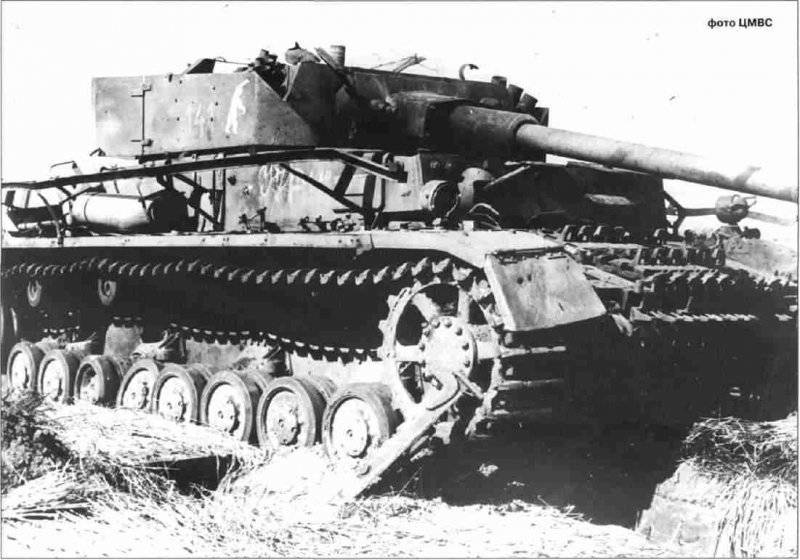
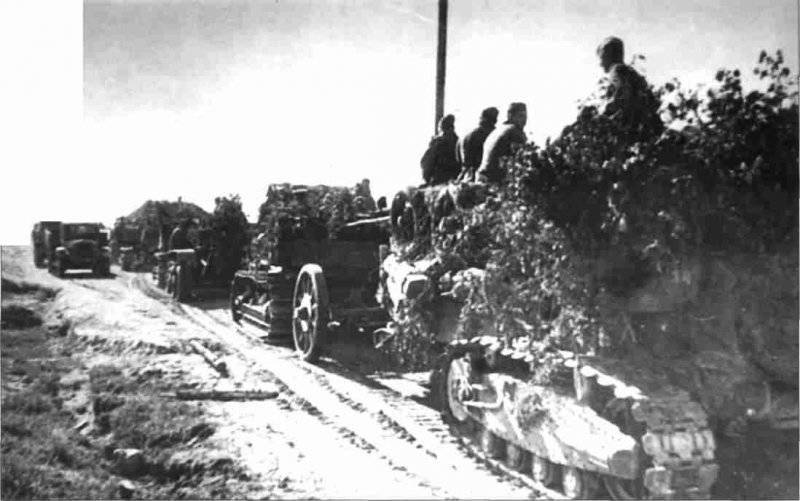
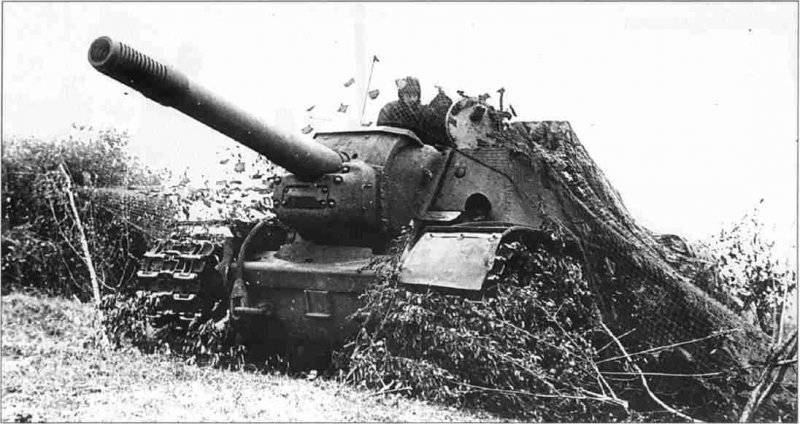
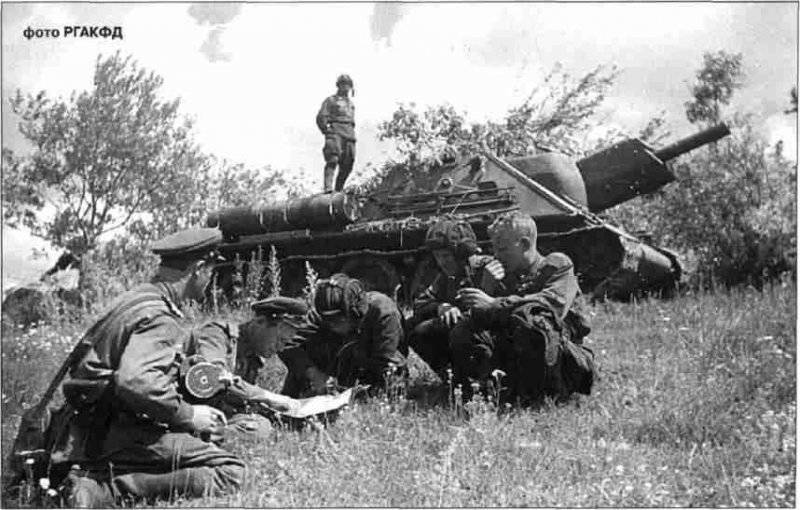
Information